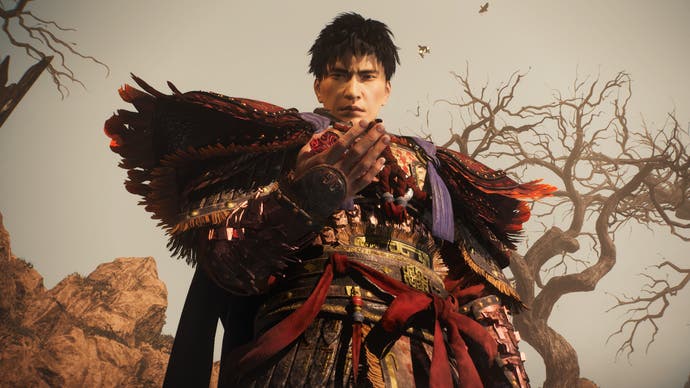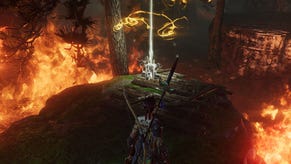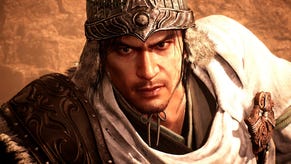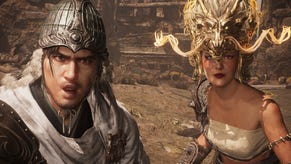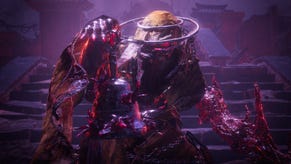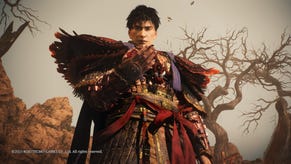Wo Long: Fallen Dynasty review - "masocore" action with an approachable twist
Morale support.
There's always a cause for concern when you think you've hit a wall early on in a game, or in the case of Wo Long: Fallen Dynasty, at the end of what's meant to be its tutorial mission. Thrown straight into the thick of China's turbulent Three Kingdoms era during the Yellow Turban Rebellion, you find yourself up against one of its formidable leaders, whose strength has been enhanced by a cursed elixir. Surely this is meant to be a trick boss you're supposed to lose against, like in Sekiro? Or there must be an easy exploit right under your nose, as with Dark Souls' Taurus Demon? Fortunately, after almost an hour of struggle, I realised it was the latter, the price for turning on Chinese audio for authenticity but failing to read the subtitles during the thick of battle.
It's a rather cruel first hurdle to put in front of you, perhaps characteristic of Team Ninja's "masocore" sensibilities, but almost an anomaly to the rest of the marathon ahead of you. In leaving behind the Nioh series set in Sengoku-era Japan, the studio introduces new mechanics and features that actually make Wo Long one of the most approachable Soulslikes I've played in years, without simply sticking it in easy mode.
Koei Tecmo is no stranger to the Three Kingdoms era, having spent two decades hacking and slashing through this historical timeline in the Dynasty Warriors series. The translation from musou to Soulslike comes with a dark fantasy angle as this mysterious elixir is turning all exposed to it into demonic creatures, including the warlords fighting to acquire its power for themselves. Given the numerous larger than life heroes that have virtually been mythologised not just in the musou games but countless other Chinese adaptations, it seems fitting that these figures should also fight alongside you. If you played Nioh 2, you might remember being occasionally accompanied by an AI-controlled companion in several missions. In Wo Long, this is almost the default, where an ally (sometimes two) will accompany you from a mission's start to its concluding boss fight, while you can also summon another from your accruing roster.
Which is not to say the legendary likes of Zhao Yun, Cao Cao, or Liu Bei will fight your battles for you, although cheering them does make them far more proactive. I treat them almost like a security blanket so I know someone has my back, giving me the confidence to charge in more recklessly, though it's the much improved and more fluid combat system that makes me want to face its challenges myself.
Some of this is down to some more forgiving changes from Nioh. For instance, falling into water or off a cliff isn't an insta-death, while running or even normal attacks don't consume stamina. You don't even lose all your Qi, Wo Long's equivalent of Souls for leveling up your character, upon being killed, though you will have to exact revenge on the enemy who felled you in order to retrieve any you've lost. Movement has also greatly improved thanks to a dedicated jump button, including a double-jump that allows you to flip up to higher ground much more easily, which in turn gives you opportunities to leap down for a surprise takedown. Stealth plays just as important a role so that you can walk slowly up to an enemy and deliver a backstab. A crouch button would've been appreciated but it helps that your foes are also often very shortsighted.
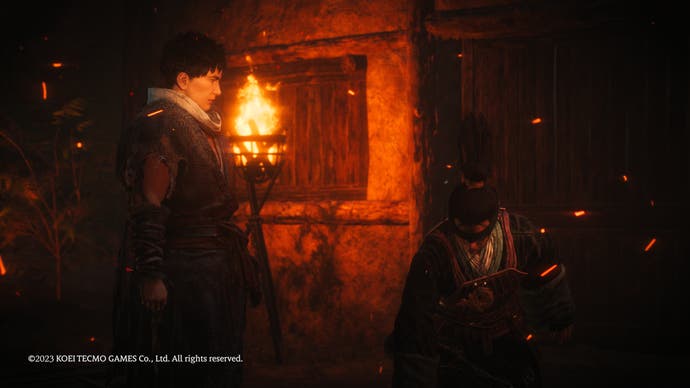
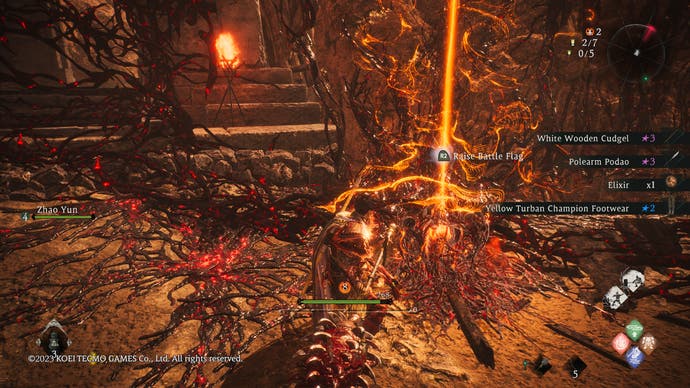
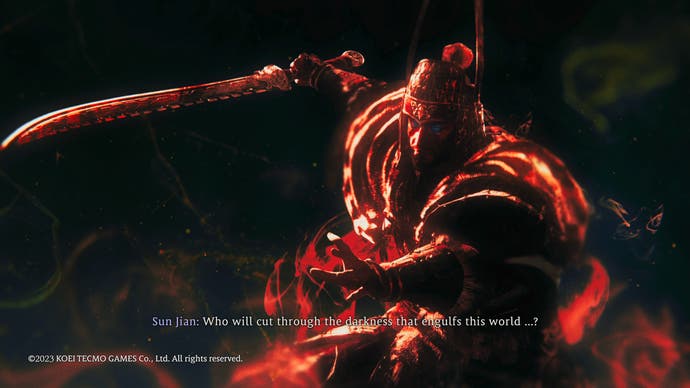
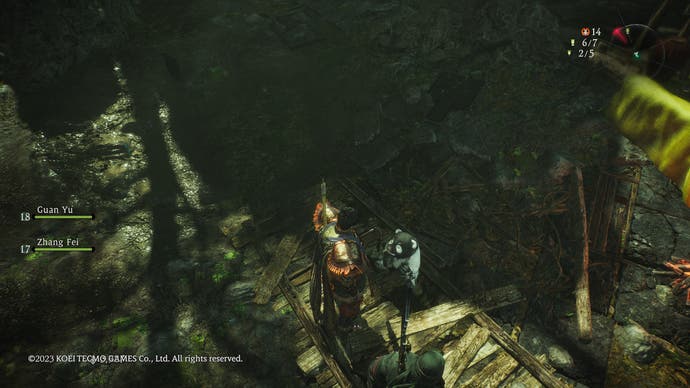
But let's get back to the combat, namely the stamina system - or rather your spirit gauge in Wo Long's parlance. An evolution of Nioh's Ki meter, with a gauge that can now flow both negatively and positively, it's represented by an orange-red bar that moves to the left for the former, and a blue bar that moves to the right for the latter. Realistically, you're rarely in the blue because you'll be using spirit a lot, whether that's performing your stronger attacks, your wizardry spells, or your weapon's martial arts. Normal attacks however don't use spirit, and so these, and deflecting attacks, are what will keep your spirit out of the red.
Deflecting is where things get interesting. Soulslike veterans will understand that blocking is a less productive form of defence compared to dodging, whereas Bloodborne (which shares a producer with Wo Long in Masaaki Yamagiwa) did away with shields altogether. Deflecting in Wo Long initially seems counter-intuitive, because it's actually the same button for evading, yet in practice it's kind of genius. My instinct is already to dodge an incoming attack, but time it right and that dodge becomes a deflection. Instead of a separate parry button you're hoping you've timed well enough to avoid a brutal punishment, it feels like I can still try to dodge but sometimes also luckily deflect, and before long I was basically priming myself to 'dodge into' an attack in order to deflect it. Soon enough it becomes vital, not just because it knocks your opponent off balance for you to land a counter, but because it also helps regain that all-important spirit. It's also less rigorous than Sekiro's very precise and demanding parries, because where that game was also to an extent a fighting game, where you also needed to know when to jump over a sweep or dodge a grab, in Wo Long you can parry anything - and I do mean anything.


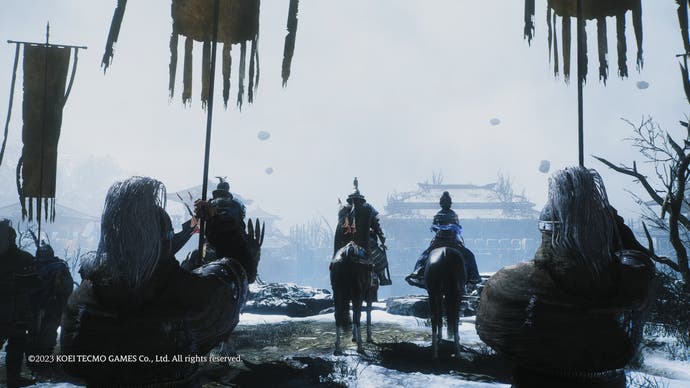

This is especially the case with an enemy's unblockable critical blow, visibly telegraphed with a wind-up animation and a demonic red aura, where the tension rests between you either messing up and getting seriously bodied or turning the tables and greatly reducing your opponent's spirit to the point that they're staggered and open for a fatal strike. I actually found myself greatly anticipating and even wanting to bait out these attacks, not least because deflecting critical blows looks super stylish. Having the camera cinematically crash zoom in as I follow up with a fatal strike is immensely rewarding, and the crackling audio that accompanies it has the same effect as after bowling a strike.
Landing fatal strikes is also how the game becomes easier, due to its relationship with Wo Long's morale system. Displayed as a number above an enemy's head, morale in Wo Long works like an enemy's level in an RPG, where you can use it to gauge whether you should have a go or give them a wide berth. The difference is these values can go up or down, so hitting an enemy with a fatal strike lowers their morale while you gain one, and vice versa, like moving weights from one side of balancing scales to the other. Keep up a good streak, and you'll find yourself a heavyweight who can confidently go toe-to-toe with whatever demonic enemy lurking around the corner. You can't get too cocky though you also lose any morale gained if you die, which adds a real tense risk/reward element.
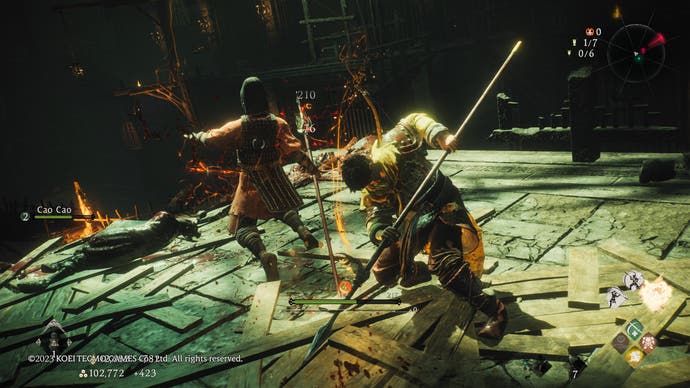
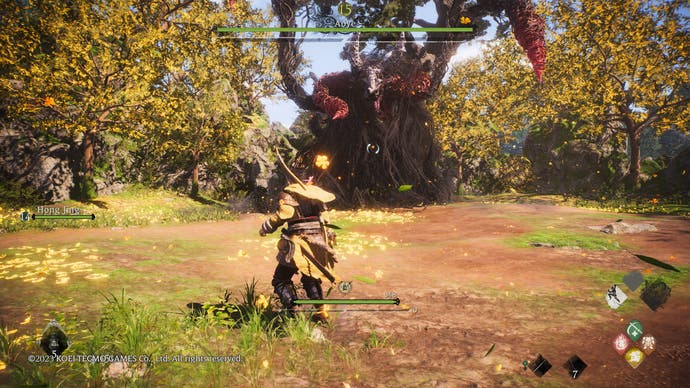
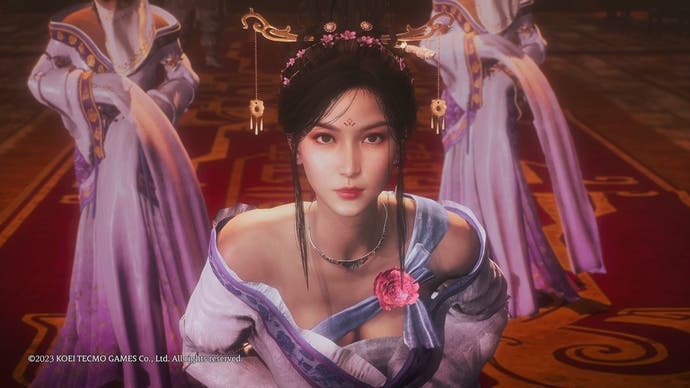

If that penalty sounds unforgiving, this is where flags come in, which don't only act as checkpoints but, in keeping with the Three Kingdoms theme, are also representative of your domination of the battlefield. The more flags you plant, the higher your fortitude rank goes up, its value also being the lowest baseline figure your morale can fall to. Getting stomped by a boss with a morale of 20? Then plant all the flags in that level so that your default morale matches theirs. Skilled players who get through unscathed find they can even increase their morale beyond this number, while in a twist to how you interact with other players who have fallen, you can donate one of your healing potions in exchange for raised morale. It's almost like a dynamic difficulty setting, that in turn encourages you to explore each level thoroughly.
It certainly gives more incentive to engage with the environments, which like Nioh before rarely inspires the imagination beyond the typical locked doors, blocked paths and returning shortcuts, even if visually things do eventually vary beyond the generic ransacked villages and cavernous mountains. It's also curious that Team Ninja hasn't seen to revamp a loot system that's so excessive in quantity - a leftover feature owing to Nioh originally being designed so its gear had finite durability - that the only reasonable and efficient response is to just equip whatever has the highest number and sell the rest off. Knowing you'll probably find even better gear in the next mission anyway, it's no wonder I hesitated to visit the smithy to upgrade anything until very late in the game.
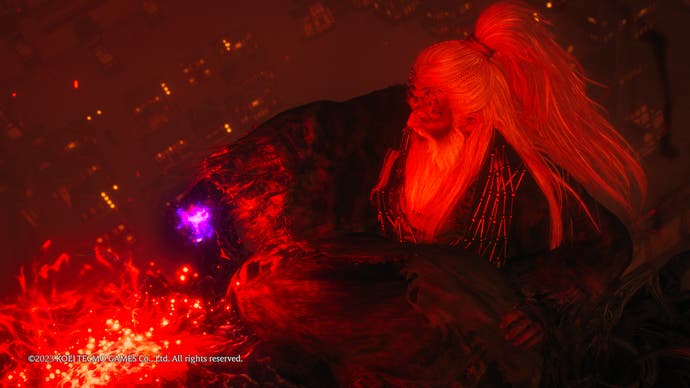
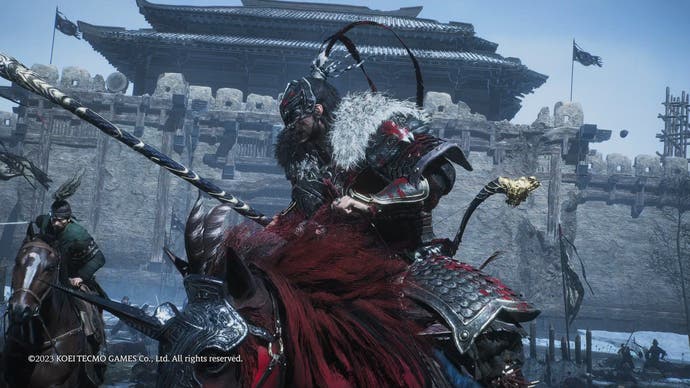
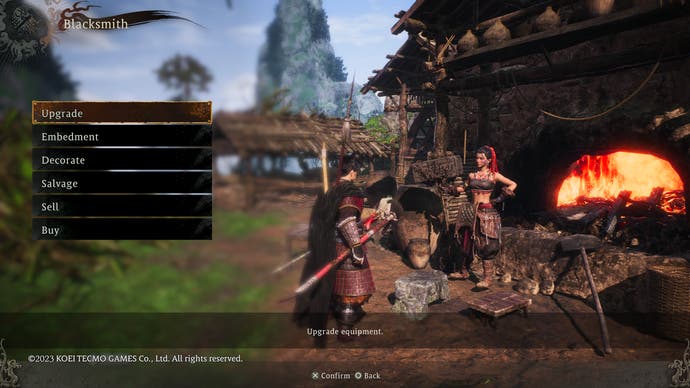
A new setting may suggest a new chapter, but I'd almost prefer to call Wo Long a Nioh-like, or rather the sequel that Nioh 2 should have been, further refining its systems and customisation, cutting back some if not all bloat, and adding an exciting evolution of its foundations that makes its masocore challenge more approachable on its own terms. Having allies along for the ride is certainly more comfortable, but when you can stop a demonically possessed warrior twice your size in his tracks, riposte with a plunging spear from on high, and cut his morale down to size in the process, the satisfaction is all yours.
